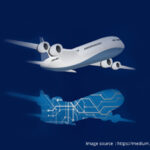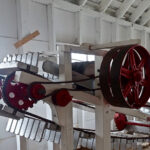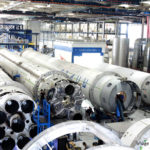
The transformation in digital processes such as the Internet of Things, Automation, Robotics, and Additive manufacturing – has a disruptive impact on mechanical engineering Design as well as Manufacturing. Engineers redesign processes and operations to accommodate these new advances and how they design products for increasing smart manufacturing facilities.
Developments in technology have reformed the nature of manufacturing. Automation is reducing the human assistance through technology by which a process or procedure is performed. As automation takes hold, forward-thinking engineers will embrace these digital tools and technologies. This allows them to make higher-quality products more efficiently and react more rapidly to shifting consumer demands, building customer loyalty and gaining market share.
The benefits to using automation outweigh the challenges, especially when it can increase efficiency and production. It’s realistic to see up to a 30% increase in production by using automation in the manufacturing process.
The following technologies are typically considered key mechanisms of Automation: Each of these Automations mechanisms has large impacts on engineering design as well as manufacturing.
An IoT (Internet of Things) ecosystem consists of web-enabled smart devices that use embedded processors, sensors and communication hardware to collect, send and act on data they acquire from their environments. IoT devices share collected sensor data by connecting to an IoT gateway or other edge device that send data to the cloud for analysis or analyzes locally. We can connect the entire manufacturing ecosystem with real-time communication and data from interconnected machines and devices, also tracking operational performance.
Big data is a word that describes the huge volume of data both structured and unstructured – that enhance a business on a day-to-day basis. But it’s not the quantity of data that’s essential. It’s what organizations do with the data that matters. Analysis of big data can lead us to better decisions and strategic business moves.
Relies on virtual reality and augmented reality to create realistic, perfectly scaled, three-dimensional images or holograms that speed up product design, reduce iterations, and shorten time to market.
Rapidly-advancing technologies allow engineers to design and manufacture products of high geometrical complexity which cannot be manufactured by any other production technique, often cannot be made using traditional manufacturing methods.The process of joining materials to create objects from 3D-CAD-model-data is defined, usually layer upon layer approach, as opposed to subtractive manufacturing methodologies. The machine was designed for the manufacture of metal components, the production of complex, lightweight and robust components can now be achieved more profitably.
Prototypes are essential for efficient manufacturing and speed to market. A prototype is commonly used to determine a new design to enhance precision by system analysts and users. Prototyping helps to provide specifications for a real, working system rather than a theoretical one. Modeling/simulation scenarios early in the design process help determine the best possible design for prototyping. Virtual reality and augmented reality programs are rapidly becoming potent visualization and design tools.
Big data is essential for optimizing performance at every stage of development, from design through production. End-use performance data can also lead to changes in engineering design for future versions. Big data is also needed to identify and analyze consumer trends, which can directly impact what engineers make, and how they make them. Smaller companies can buy data studies; larger companies can use the Internet of Things to collect their own data and identify trends to deliver better customer experiences. Internet of Things collects data by itself, however, which is not always useful. We need to combine with other data, such as product master data, client master data, or area master data, will be a better understanding of how products are being used ascend, so that improvements way could be paving.
It involves the heavy use of automation and data exchange in manufacturing environments, manufacturers will be able to operate “smarter” factories in which they can more easily tailor products to specific customers. Development in new Automated Technology is transformations that create it possible to collect and evaluate data across machines, quick enabling, more flexible, and more accurate processes to produce higher-quality goods at reduced costs. Manufacturing productivity will improve through this revolution also increase shift economics, faster industrial growth, and modify the profile of the workforce, finally changing the competitiveness of companies and regions.
Artificial intelligence technology is now making its way into manufacturing, and the machine-learning technology and pattern-recognition software at its core could hold the key to transforming factories of the near future. AI (Artificial intelligence) will perform manufacturing, quality control, shorten design time, and reduce materials waste, improve production reuse, perform predictive maintenance. Artificial intelligence systems can pull conclusions regarding a machine’s situation and identify irregularities in order to make predictive maintenance possible by analyzing the data.




